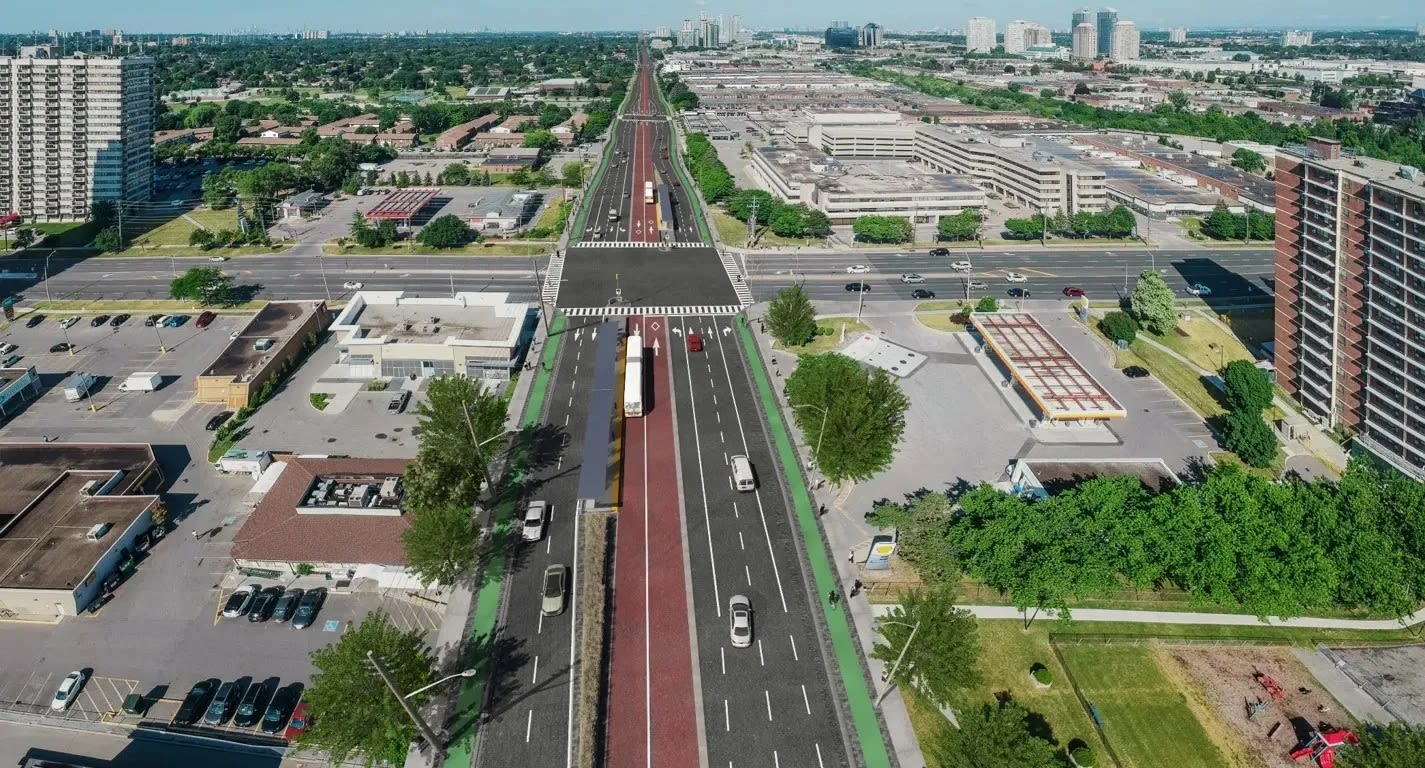New round of public consultations for Durham-Scarborough BRT
Preliminary design results on the important BRT project are now available online.
Nov 17, 2020
Have you ever seen images of strongmen who would pull a bus by tapping into sweat and brawn?
You may be able to do even more, simply by giving your opinion.
Transit officials are now exploring ways to bring new and improved rapid transit connections to Durham Region and Scarborough.
A third round of online public consultations has begun.
An artist concept of how the route would look in Downtown Whitby. (Metrolinx image)
The Durham-Scarborough Bus Rapid Transit (BRT) project would provide more reliable and frequent TTC and DRT bus service. And that would mean a more seamless travel across the region.
A BRT is a special, efficient bus route or system, that can include things like dedicated lanes and special traffic signals, to help keep buses on schedule.
The Durham-Scarborough BRT is a 36-kilometer bus rapid transit corridor that would serve Oshawa, Whitby, Ajax, Pickering and Scarborough, and connect with Scarborough Centre, the University of Toronto Scarborough Campus and TTC Line 2. Dedicated bus lanes are recommended, where feasible, to provide shorter travel times and increased reliability for TTC and DRT buses that will use the lanes.
In Oshawa – Bond Street at Stevenson Road, looking northwest with the BRT. (Metrolinx image)
With rapid growth in the past decade, and an expectation that – especially post-COVID – travel demand will continue to increase and higher capacity transit will be needed to link communities and employment on both sides of the Toronto-Durham boundary, the BRT would be a welcome necessity for many travellers.
Bus Rapid Transit was identified as the preferred transit technology to link Durham and Scarborough through the 2041 Regional Transportation Plan, and the Durham-Scarborough Bus Rapid Transit Initial Business Case.
The Initial Business Case shows 10 to 20-minute time savings for transit trips along the corridor and efficient transfers between routes, enabling a traveller to get anywhere in the GTHA easily and reliably without looking at a schedule.
A concept at how the BRT would look in Toronto, at Ellesmere Rd and Markham Rd. (Metrolinx image)
The project is expected to provide 645,000 residents with access to frequent rapid transit and easier access to over 229,000 jobs.
Engaging with communities is one of the top priorities of the project. Throughout the planning process, officials have been engaging with the people living, working and travelling along the corridor to share information, better understand local impacts and discuss a design that works best for the corridor.
Two previous rounds of consultations were held in 2019.
In Oshawa, the view down on Bond Street at Park Street, looking southeast with the BRT. (Metrolinx photo)
At this round of consultations which will be held virtually, you will be able to engage with the project and review the preliminary design and technical studies at your convenience to provide feedback.
To participate, just click here. Consultation materials will be online until December 18, 2020.
Read here about how bus rapid transit routes are opening avenues for transit passengers across the region.
by Aman Gill Metrolinx communications planning senior advisor
